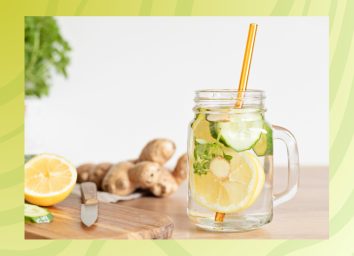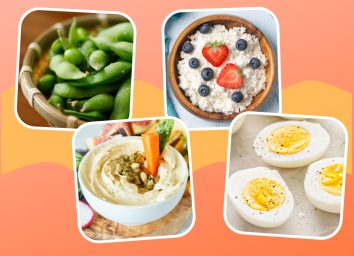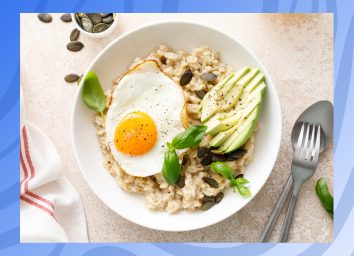11 Best Canned Tunas on the Market, and 3 to Stay Away From
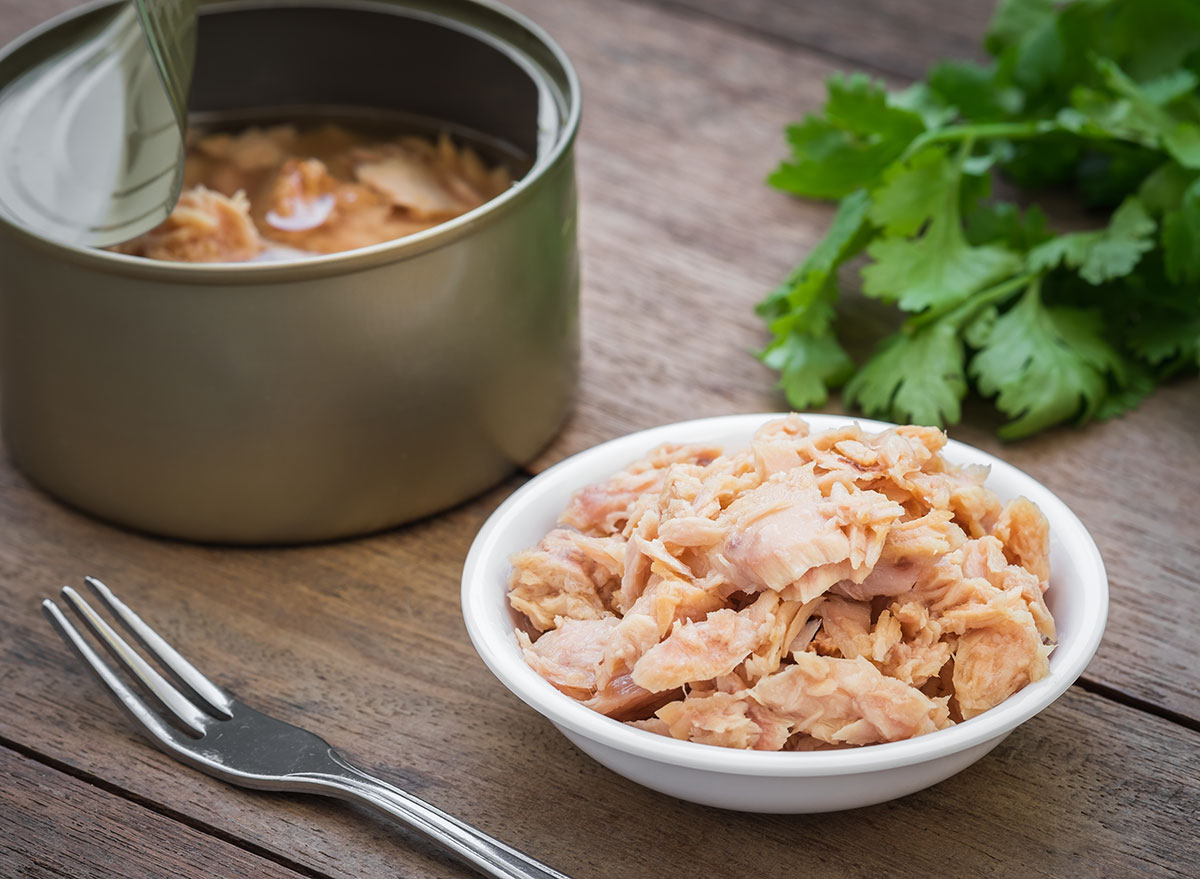
When it comes to convenient protein sources, canned tuna easily takes the gold. Whether you're making a quick tuna salad, sandwich, or casserole, having canned tuna in your pantry is a staple. But, not all canned tuna on the market is created equal, with some of the best canned tuna brands having much better nutritional values and sustainability practices than other popular options.
We spoke to dietitians and nutrition experts to guide you through the ocean of options that deliver exceptional taste, quality, sourcing, and nutritional value. Additionally, we'll alert you to the canned tunas that might not live up to our standards. Get ready to make informed choices, and elevate your tuna game.
Light tuna vs. white tuna
When it comes to canned tuna, the terms "white" and "light" refer to different species of tuna. White tuna, also known as albacore tuna, is a larger species that tends to have a milder flavor and a firmer, flakier texture. It typically has a lighter color and higher fat content, making it richer and more buttery in taste. White tuna is often used in dishes where a meatier texture is desired, such as tuna steaks or salads.
On the other hand, light tuna refers to smaller tuna varieties, like skipjack and yellowfin tuna. Light tuna is darker in color and has a stronger, more pronounced flavor compared to white tuna. It has a softer texture and tends to be more affordable than white tuna. Light tuna is commonly used in sandwiches, casseroles, and recipes where a bold tuna taste is wanted.
Both white and light tuna offer nutritional benefits, as they are excellent sources of lean protein, omega-3 fatty acids, and various essential vitamins and minerals. The choice between white and light tuna ultimately depends on personal preference, the intended use in recipes, and budget considerations.
Oil-packed vs. water-packed
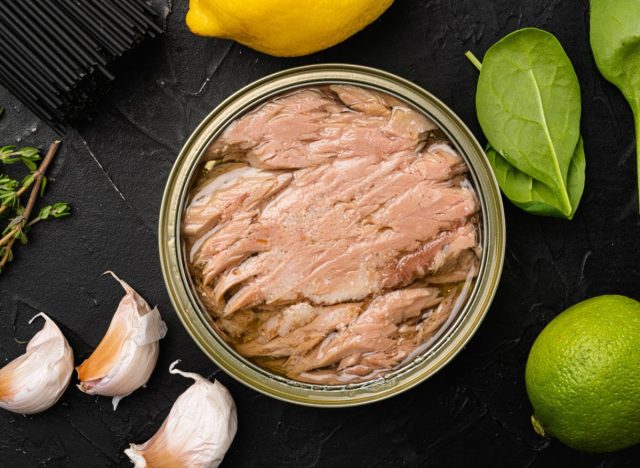
Oil-packed tuna, as the name suggests, is canned with oil, usually vegetable oil or olive oil. This method helps preserve the tuna's flavor and texture while providing a rich and moist product. Fat-soluble vitamins and the tuna's nutrition are also preserved here. The oil enhances the taste and adds a lusciousness to the fish. However, it also means that oil-packed tuna tends to have a higher calorie count due to the added oil.
Water-packed tuna, on the other hand, is canned with water, typically with a small amount of salt or broth added for flavor. This method results in a lighter and more natural taste, allowing the singular flavor of the tuna to shine through. Water-packed tuna is often preferred by individuals who are watching their calorie or fat intake, as it generally has fewer calories and less fat compared to oil-packed tuna.
When choosing between oil-packed and water-packed tuna, consider your personal preferences in terms of taste, texture, and dietary needs. Oil-packed tuna may be more suitable for recipes that benefit from the richness of the oil, such as pasta dishes or salads, while water-packed tuna can be a healthier option for those looking to reduce their fat intake or enjoy a simple, more straightforward tuna flavor.
What about mercury in tuna?
It is crucial to remain aware about the presence of mercury in seafood, particularly if you are pregnant. Mercury, in high amounts in the diet, can have adverse effects on the nervous system, including brain development in infants and young children.
Pregnant women, nursing mothers, and young children are advised to be more cautious about their consumption of high-mercury fish. Different species of tuna contain varying levels of mercury. Generally, larger and longer-lived tuna species tend to accumulate higher levels of mercury in their tissues.
The following tuna varieties are more likely to contain higher mercury levels:
- Bigeye tuna: Bigeye tuna is a large kind of tuna and may contain increased levels of mercury compared to other species.
- Bluefin tuna: Bluefin tuna is more likely to contain high mercury levels due to its long lifespan in comparison to other tuan, and its position as a top predator.
- Albacore tuna: Albacore tuna, also known as white tuna, typically contains higher mercury levels than other tuna, like skipjack or yellowfin.
It's important to note that the health benefits of consuming fish, such as the omega-3 fatty acids, iodine, and protein they contain, should also be taken into account. Balancing the potential risks of mercury exposure with the nutritional benefits of fish is important.
The bottom line: Fish, in general, is recommended in lower amounts for folks who are pregnant or breastfeeding. The FDA advises breastfeeding moms and moms-to-be eat 8 to 12 ounces of lower-mercury fish each week.
RELATED: Is Tilapia Good for You, or Is This Fish Toxic?
How is the tuna caught?
The method of catching tuna is a big deal for sustainability. Pole and line fishing and trolling are two highly-sustainable methods that make sure other species don't get caught in the mix. Poll and line means exactly what you think fishing means: one person with a pole. Trolling uses a boat with a few poles. Avoid the general term "line caught," which can mean the company uses other methods that sound safe but are not as sustainable—like long line fishing.
How to pick the best canned tuna
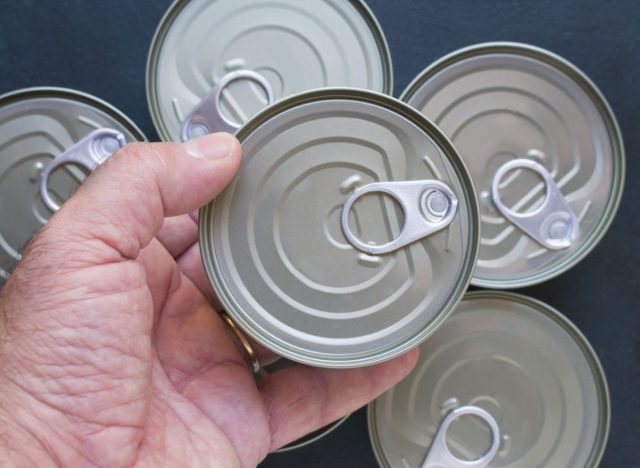
- Tuna species: Different tuna varieties have their own flavor, texture, and nutritional profile. Consider whether you want the mild taste of white albacore tuna or the bold flavor of yellowfin or skipjack tunas.
- Oil vs. water: Decide if you prefer water-packed or oil-packed based on your recipe, taste, and dietary preferences. Oil-packed tuna will be rich and flavorful, and water-packed yields a lighter taste.
- Sustainability: Look for brands that prioritize sustainable fishing practices. Check if the canned tuna you're considering bears certifications such as MSC (Marine Stewardship Council) or Dolphin-Safe labels, which indicate efforts toward environmentally-friendly sourcing. Don't fall for vague terms like "line caught," rather, stick to "pole-caught" or "trolling" if possible.
- Quality: Opt for brands who recognize their sustainable, environmentally-friendly approach. Check the packaging for the "best by" date, and choose tuna that is fresh. Avoid dented or swollen cans, which may indicate food safety concerns. Look for BPA-free canning.
- Nutrition facts: Consider the nutrition label, and notice nutrition factors like protein content, omega-3 fatty acids, and sodium.
The healthiest canned tuna you can buy
Wild Planet Albacore Wild Tuna
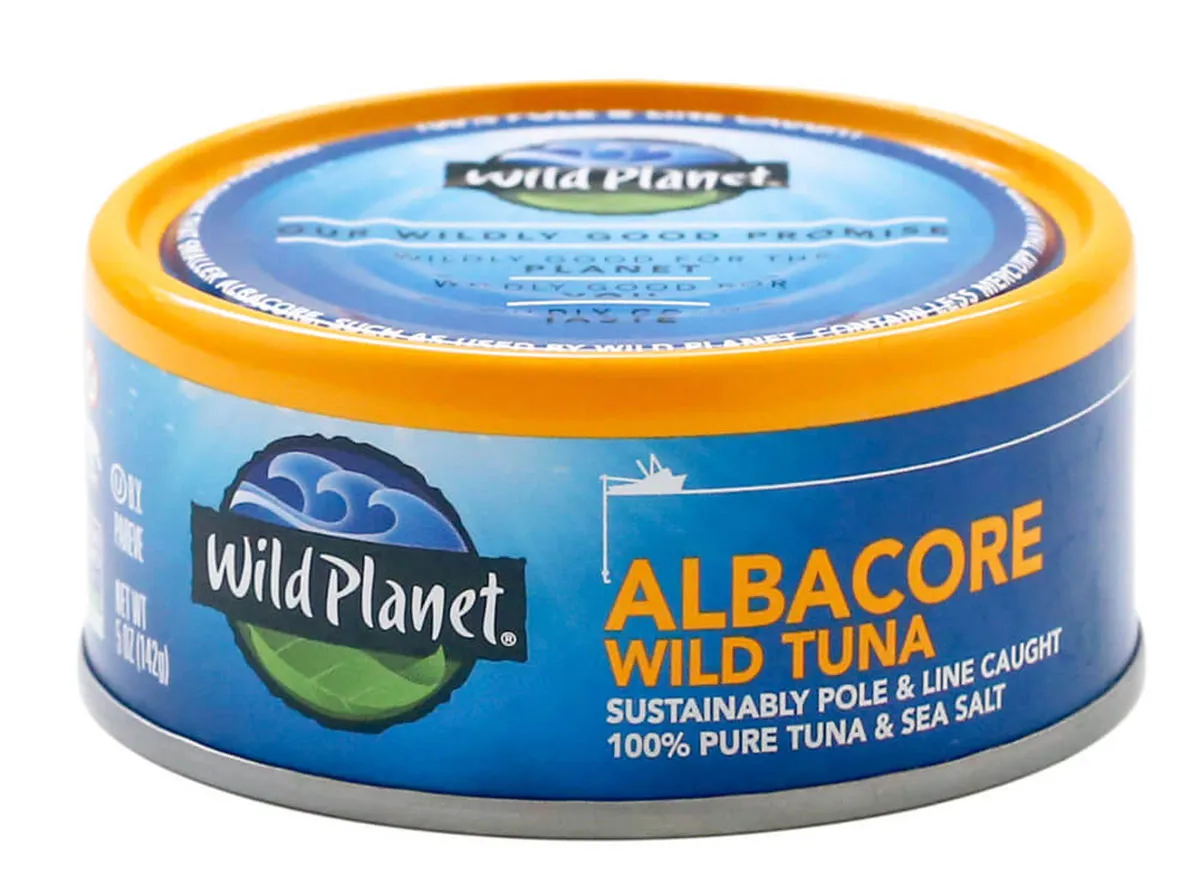
Kelsey Kunik, RDN and owner at Graciously Nourished shares why she recommend this product: "Wild Planet tuna tastes amazing and is lower in mercury than other brands, thanks to the sustainable practices they implement like pole and line fishing and only using specific species and sizes of tuna."
Similarly, Lauren Harris-Pincus, MS, RDN, author of The Everything Easy Pre-Diabetes Cookbook, endorses the nutrition in a can of Wild Planet. She says, "I second Wild Planet Albacore Tuna because the tuna is hand-packed with no water, oil, or filler added and it's cooked inside the can so all of the omega 3 fatty acids are retained with an average of 705 milligrams of EPA/DHA omega-3's per serving! The liquid you see when you open the can is the omega-3s so no draining is needed."
American Tuna
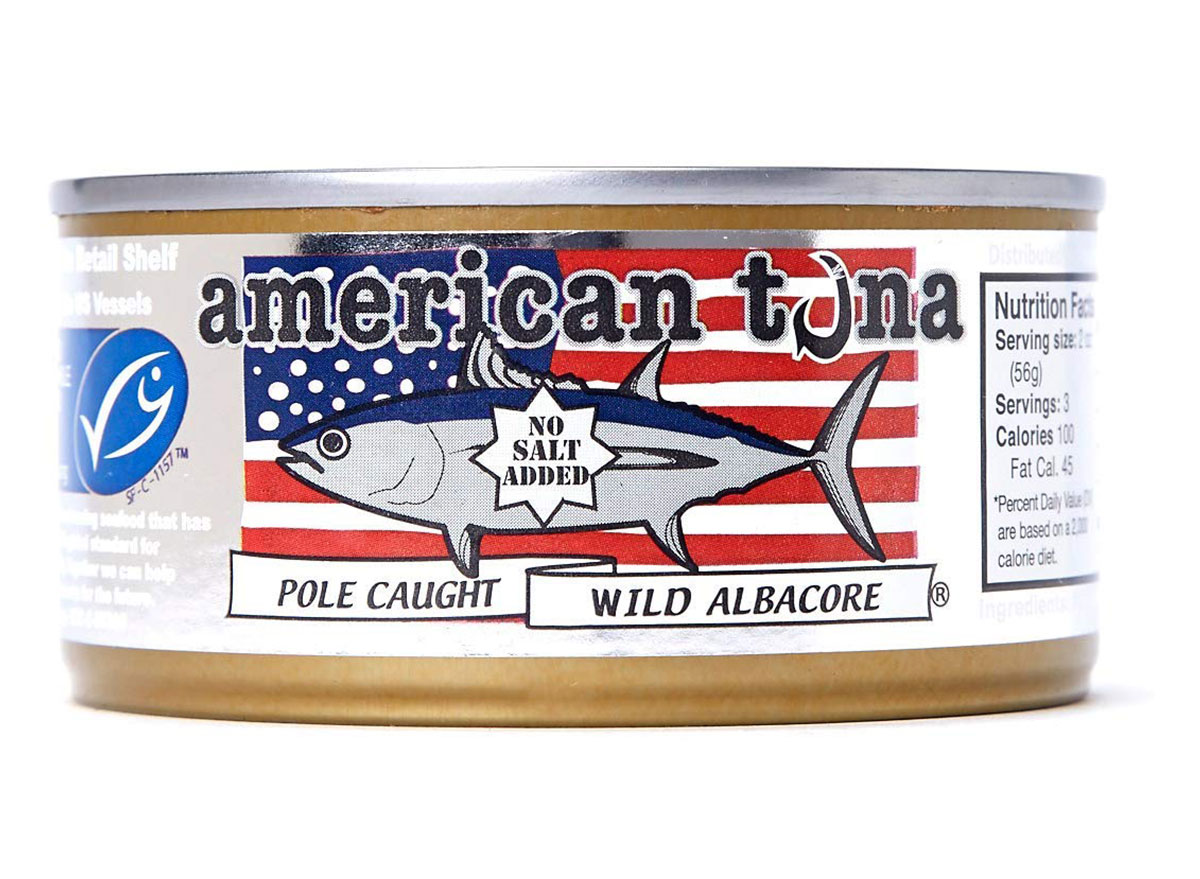
Renowned for their pole and line caught products and dedication to ocean conservation, American Tuna has received commendable ratings from Greenpeace. With a traceability system that ensures transparency from sea to can, the brand's origin lies in the collaboration of six pole and line fishing families.
In addition to their commitment to sustainability, the brand offers a diverse range of flavors, including options like brick-smoked and jalapeño, catering to various culinary preferences. Notably, this brand takes pride in their superior nutritional profile, boasting the highest omega-3 content among other tuna brands.
Safe Catch Elite Pure Wild Tuna
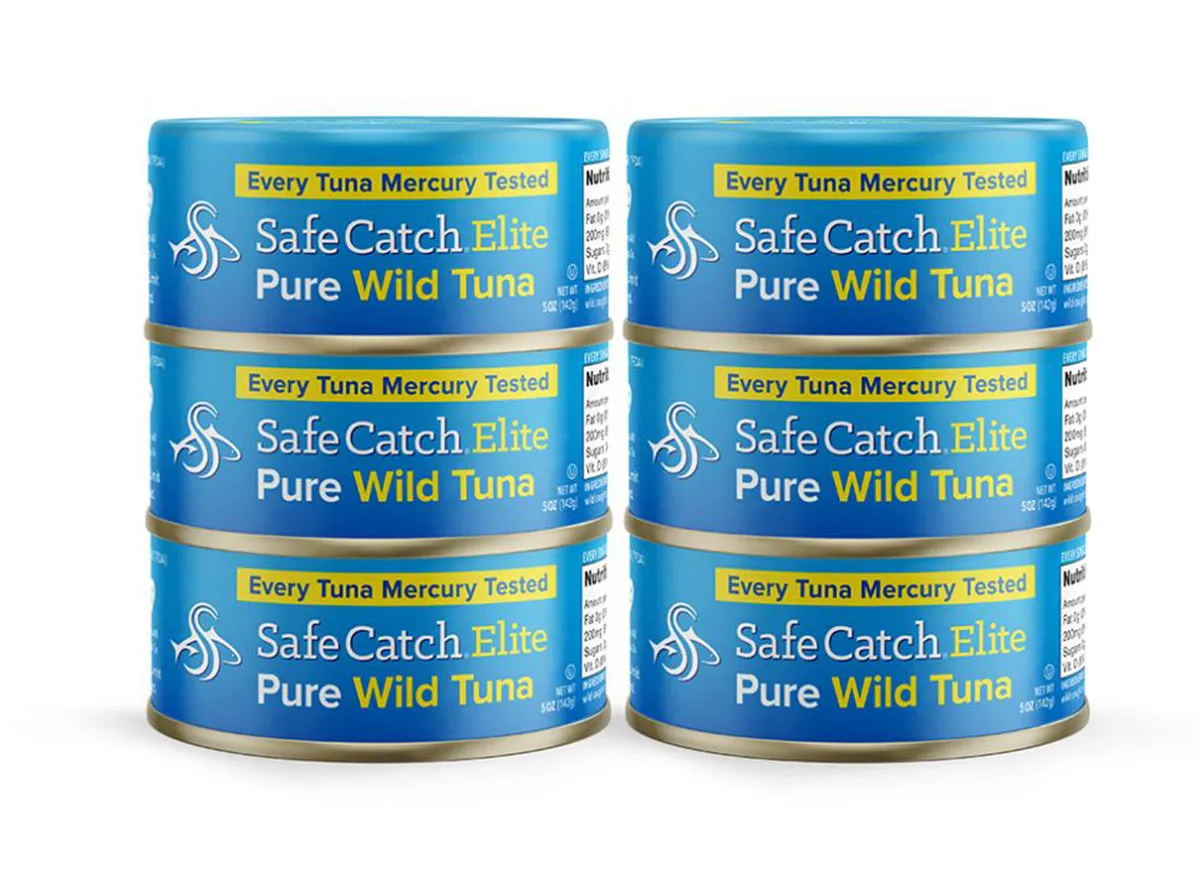
"Safe Catch Elite Wild Tuna tests every tuna that is canned, ensuring that the mercury content is lower than what the FDA deems as safe. it is sustainably caught, and it is one of the official tunas of the American Pregnancy Association. The brand claims that Safe Catch Elite is the tuna that is the lowest in mercury compared to other brands available," shares Lauren Manaker MS, RDN, LD.
For a quick lunch or snack, Wan Na Chun, MPH, RD shares how she enjoys Safe Catch Tuna: "Canned tuna is one of my favorite sources of quick protein. I love adding in some hot sauce to the canned tuna on some toasted bread for a delicious and simple lunch."
Ocean Naturals Skipjack Chunk Light Tuna in Water
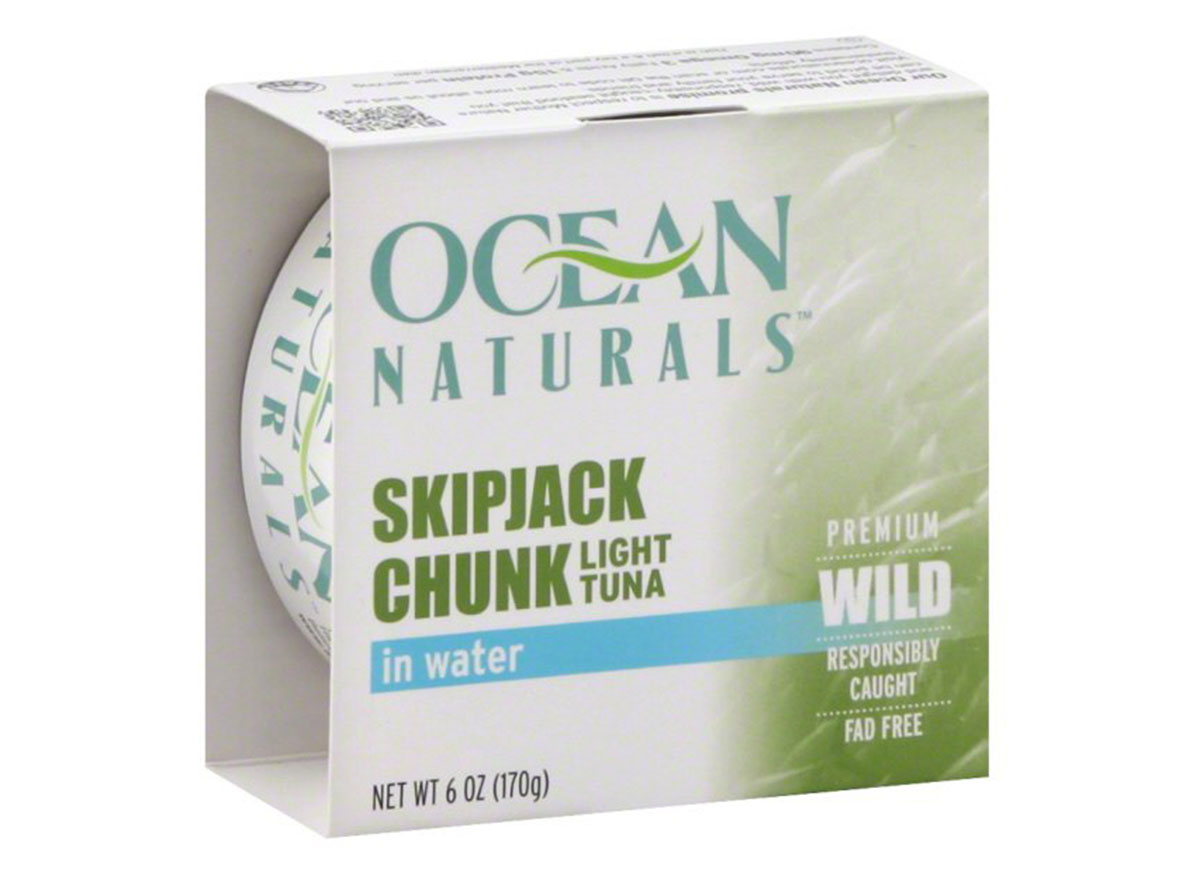
Recognized with a "green" label rating from Greenpeace, this international tuna company prioritizes responsible fishing practices and maintains a commitment to transparency.
Ocean Naturals sets an example by clearly indicating the specific fish species used in each product, and their ingredient list remains minimal, consisting only of fish, salt, water, or olive oil. Notably, their skipjack tuna provides an impressive 230 milligrams of omega-3 fatty acids per serving. Moreover, their light meat tuna solely comprises 100% skipjack, avoiding the use of multiple species to protect those that are endangered.
365 Everyday Value Albacore Wild Tuna in Water
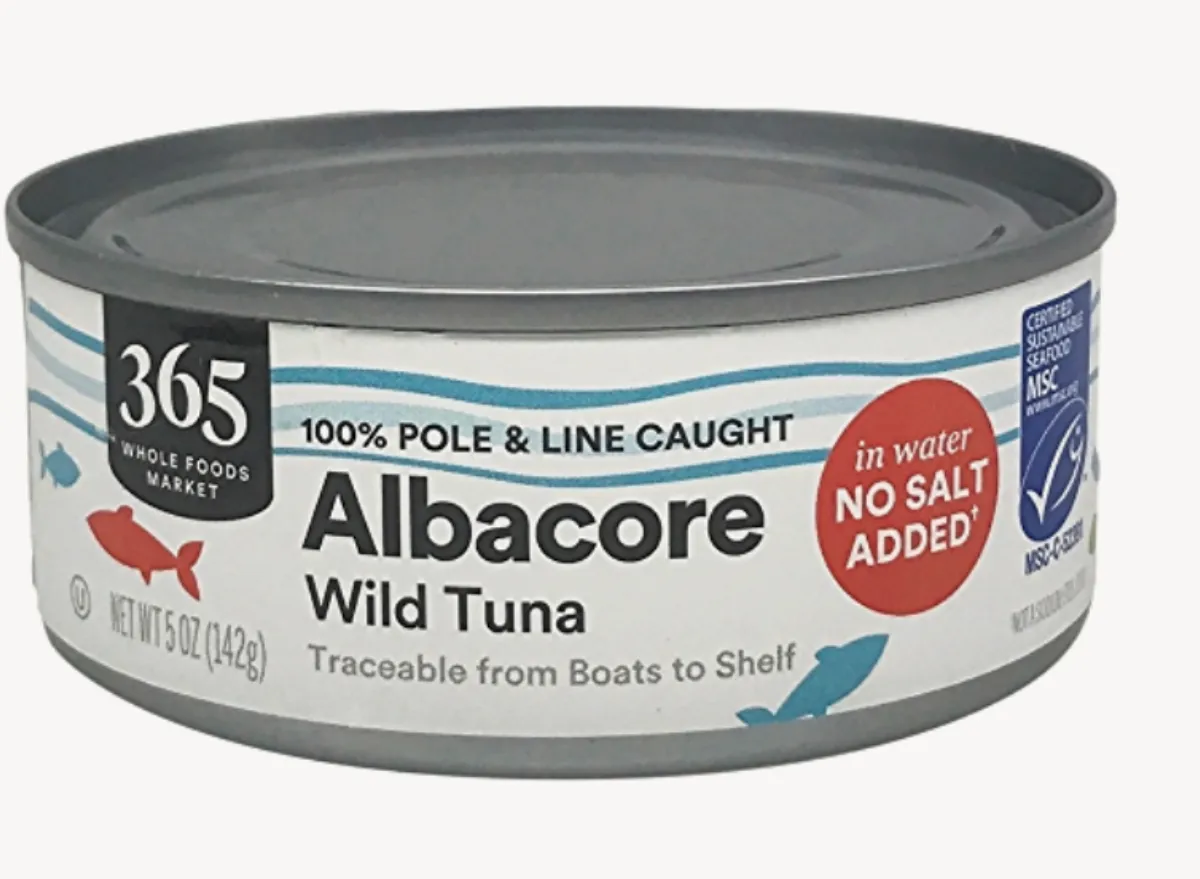
With a firm commitment to responsible sourcing, Whole Foods' private label emphasizes strong traceability measures. Notably, Whole Foods holds the distinction of being the first US retailer to pledge the sale of exclusively 100% sustainable-canned tuna. Their albacore tuna in water is a highly recommended choice, especially for those seeking a low-sodium option.
Tonnino Tuna Filets in Spring Water
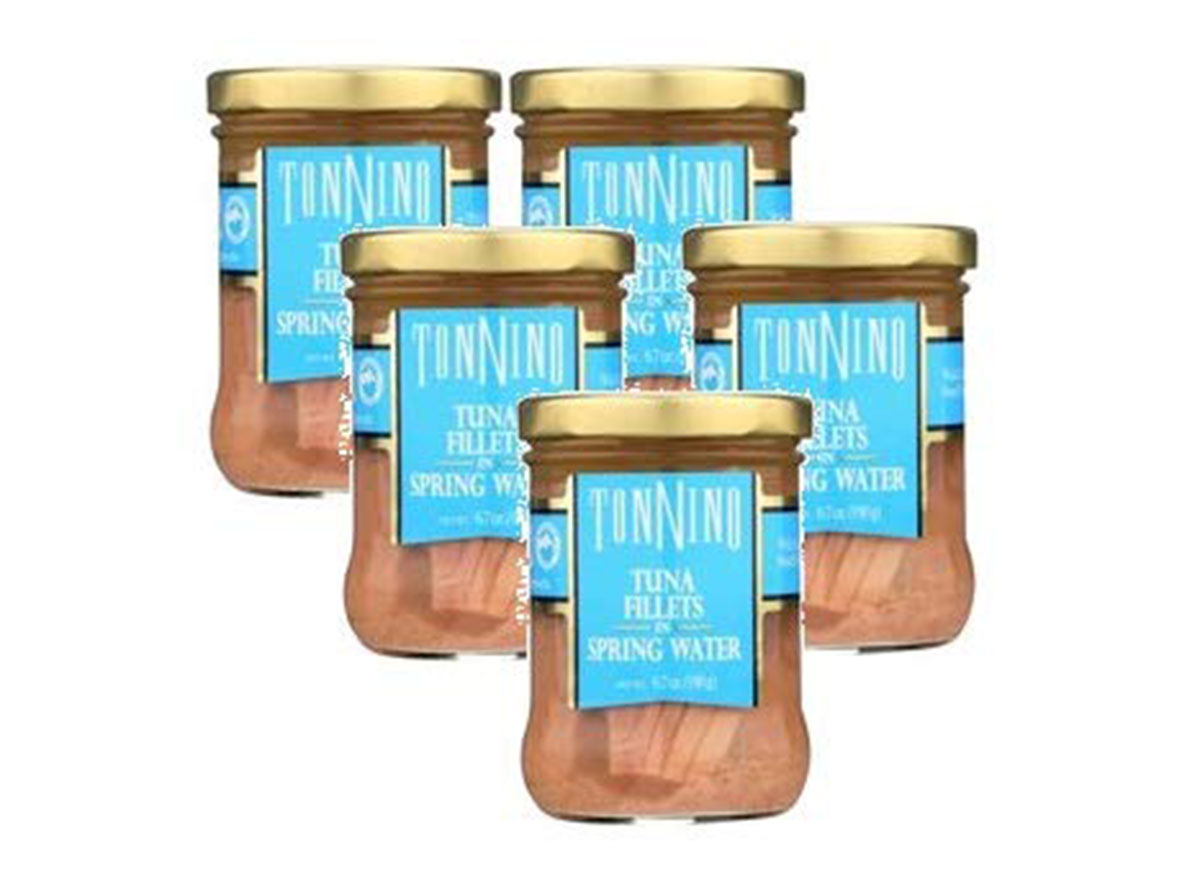
Tonnino Tuna, a premium gourmet offering hailing from Costa Rica, delivers an exceptional experience compared to conventional canned tuna. Presented in beautiful glass jars, it is available in water or olive oil and offers a range of tantalizing flavors like garlic, capers, and jalapeño.
The brand exclusively sources its tuna from vessels registered with CIATT, a conservation-focused group that ensures the preservation of resources. On-board observers guarantee that no species other than tuna are caught, reflecting the brand's commitment to responsible fishing practices.
Trader Joe's Chunk Light Skipjack Tuna
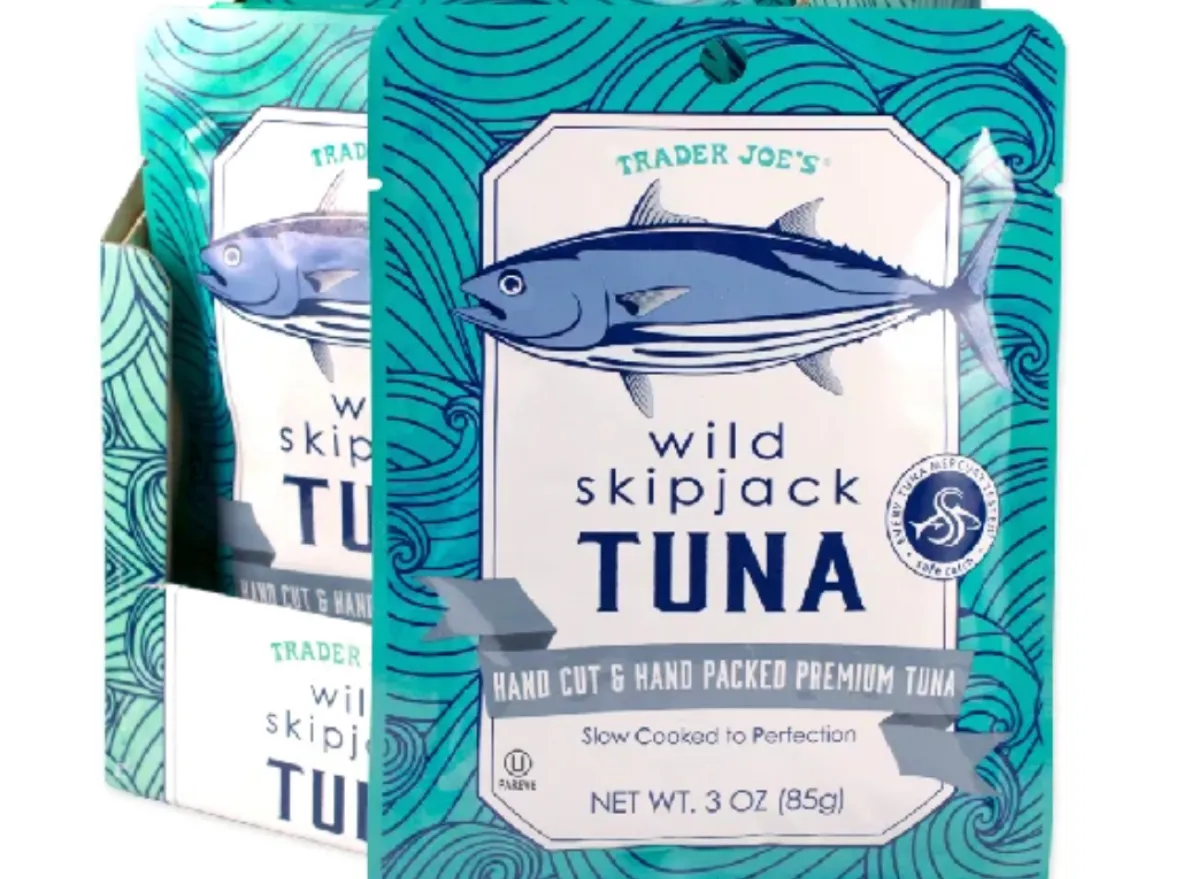
"Trader Joe's Chunk Light Skipjack Tuna is my top choice for an affordable and high-quality tuna option. It mixes seamlessly to make the perfect tuna salad. This option also offers a healthy balance of omega-3s, while being low in mercury and arsenic levels," explains Kristin Draayer, MS, RDN.
Blue Harbor Fish Co. Wild Albacore
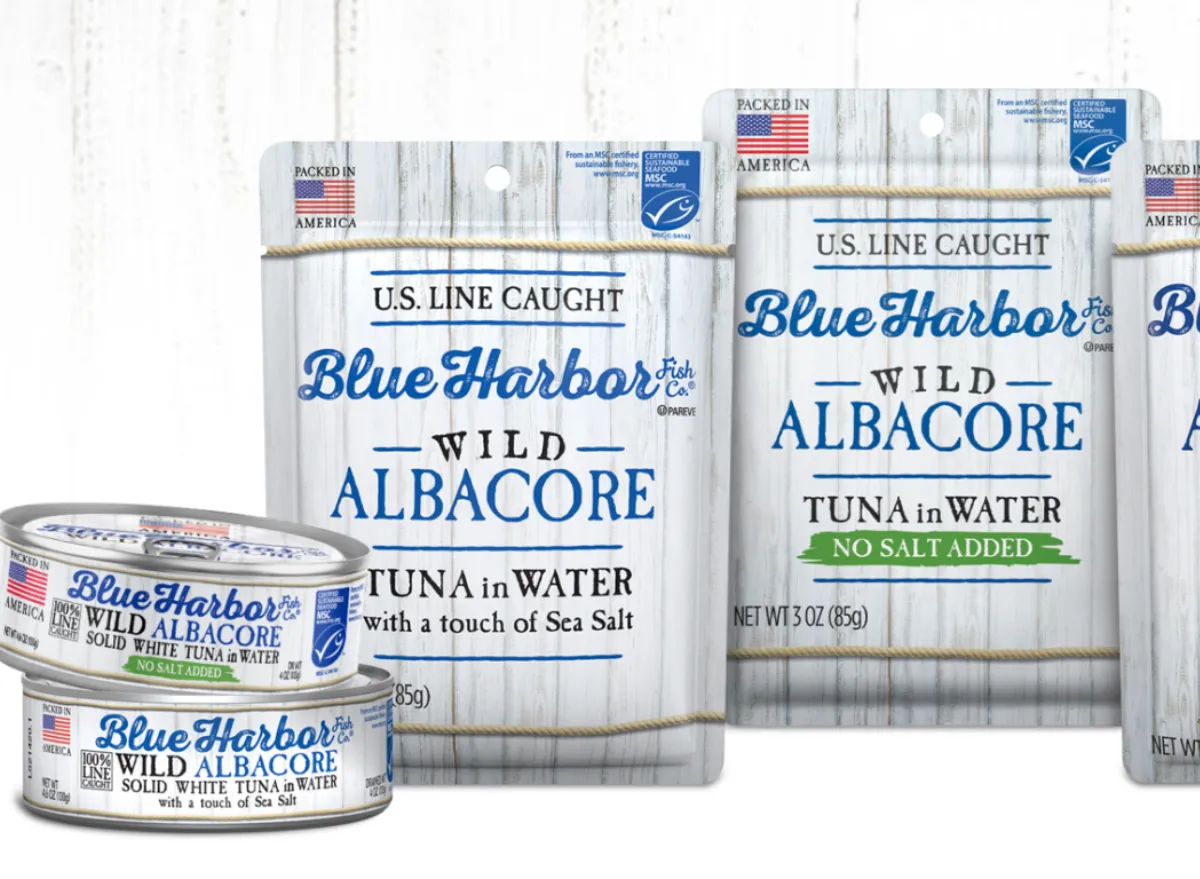
"I'm a fan of the Blue Harbor Fish Company's albacore tuna in water. This brand ensures they are using sustainable practices. They also use wild-caught over farm raised tuna, which has more omega-3s as well. Lastly, they do not have any added salt to the fish," says Nicole Ibarra, RD.
Chicken of the Sea Chunk Light in Water
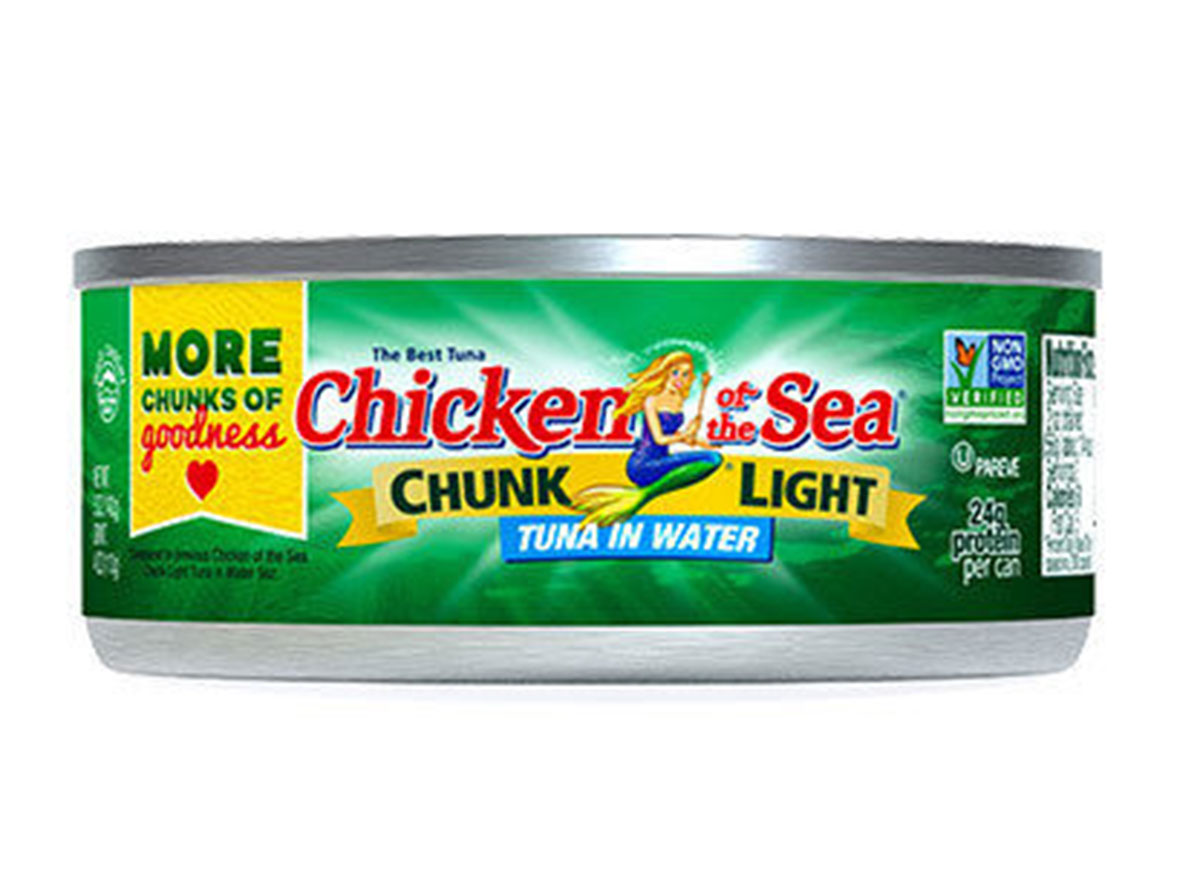
Chicken of the Sea's website highlights the sustainable fishing commitments that are in place, as they now are certified through the Marine Stewardship Council. If you are mindful of your sodium intake, the brand does provide a lower sodium variant.
Lisa Andrews, MEd, RD, LD tells us why she is a fan of Chicken of the Sea. "It's responsibly sourced, affordable, and has several options. I like that it's available in pouches, and there's no can opener needed at lunch," says Andrews.
Scout Wild White Albacore Tuna
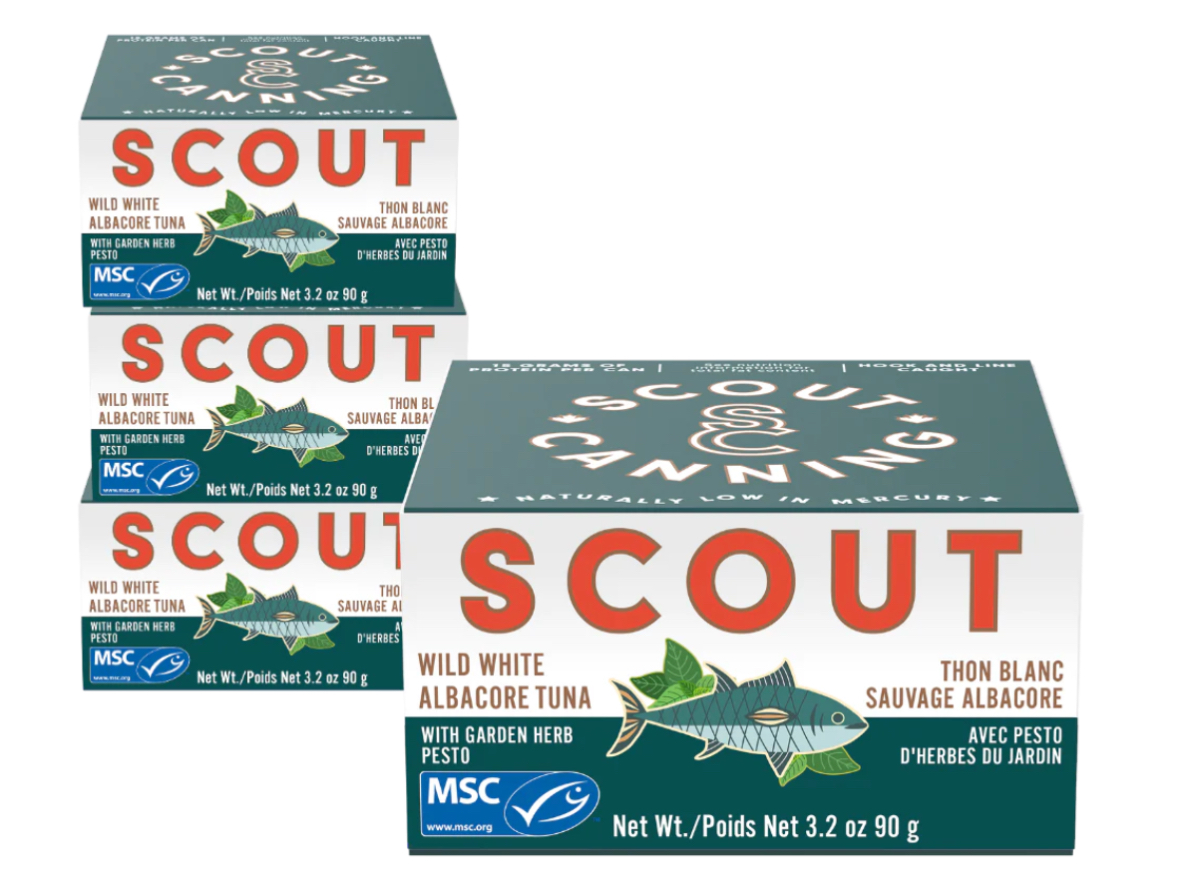
Scout's albacore tuna is wild-caught between Oregon and British Columbia, and is naturally low in mercury, high in protein with 30 grams per can, and rich in Omega-3s.
Scout's makes a Seafood Snack Kit that now make the experience of enjoying premium, sustainable seafood even simpler. Each kit pairs yellowfin tuna with a crunchy topper inspired by trending international taste profiles, including Chili Crisp, Chile Jalapeño, and Za'atar. Scout Seafood Snack Kits come complete with a mixing bowl and spork for about 30 grams of protein on-the-go.
Good & Gather Chunk Light Tuna in Water
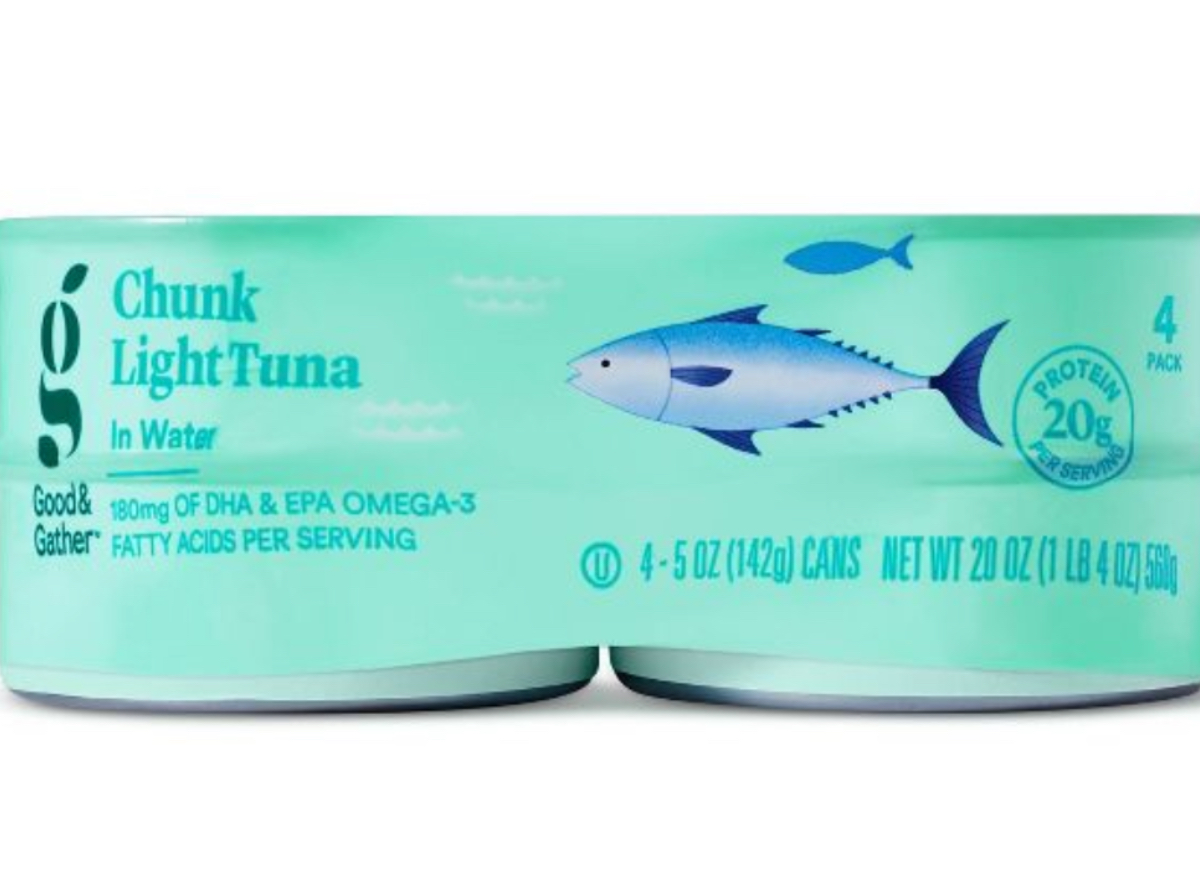
The Target brand recently switched its sourcing and commitment to sustainable fishing practices. Now recognized by the Marine Sustainability Council, Good & Gather's Chunk Light Tuna boasts the MSC seal-of-approval. However, this particular tuna exhibits significantly higher sodium levels (360 milligrams) compared to the other tunas mentioned in this list.
The Worst Canned Tuna You Can Buy
Bumble Bee Solid White Albacore in Vegetable Oil
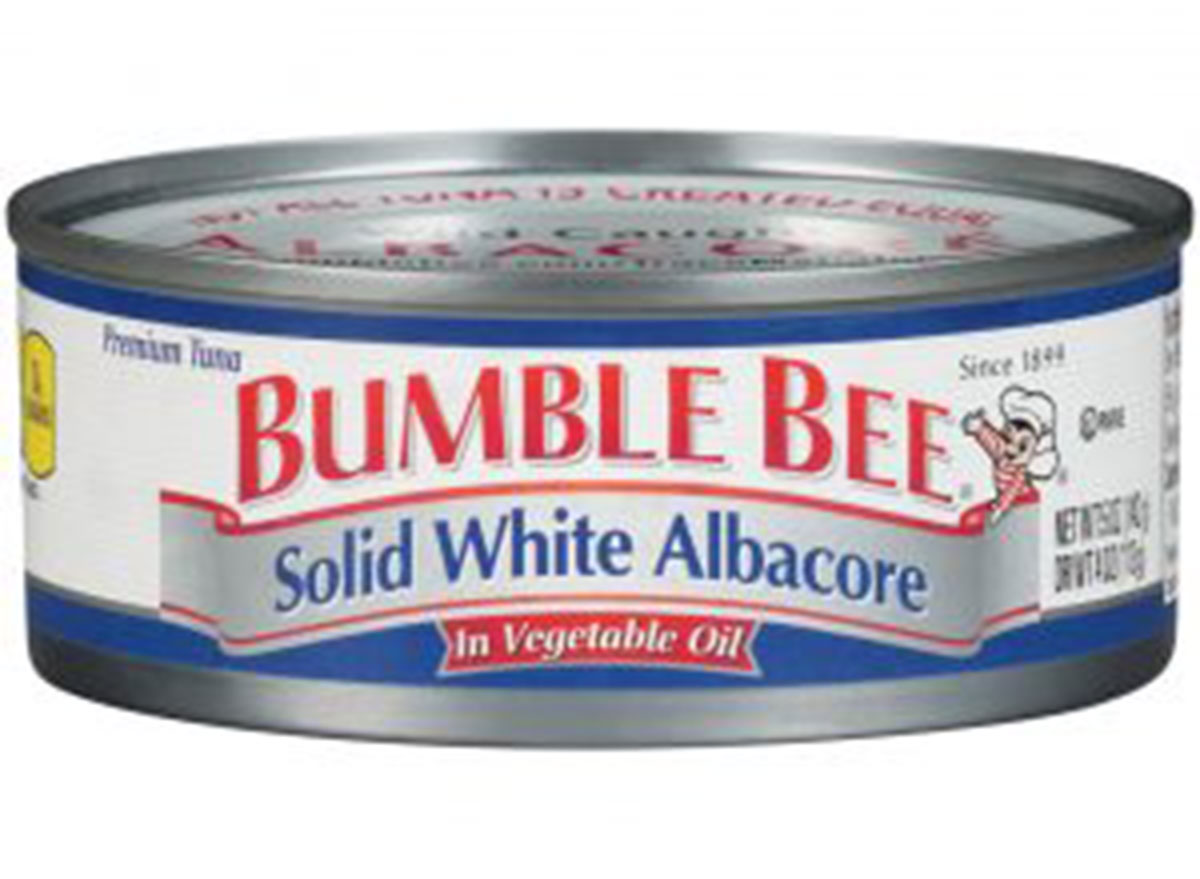
It's important to be cautious about the brand's claims of responsible fishing. Although they state their products are sustainably sourced, Greenpeace has warned against Bumblebee's deceptive practices. It's worth noting that the CEO previously faced conviction for price fixing, and the company has been accused of potential human rights and animal rights violations.
Despite their previous reputation, they are working together with the Global Sustainable Seafood Institute to become certifiably sustainable by 2025. This means that they have to meet the external standards set by the Institute to comply with the qualities of a sustainable fishery.
Kirkland Albacore Solid White Tuna in Water
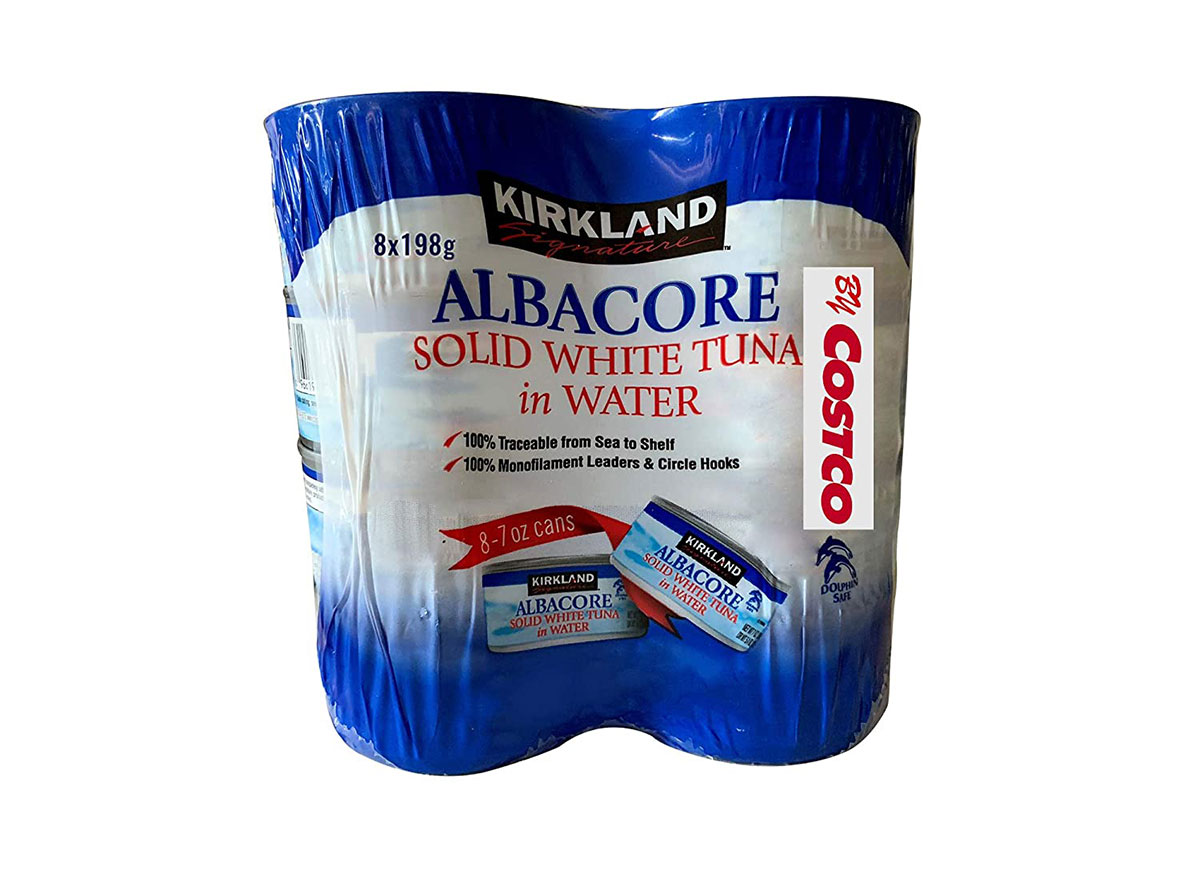
The tuna brand available at Costco is sourced from albacore tuna caught using destructive longline fishing methods, resulting in significant bycatch of endangered species. Although Costco previously offered a responsibly caught alternative under its signature brand, it is no longer available for purchase.
Starkist Chunk Light Tuna
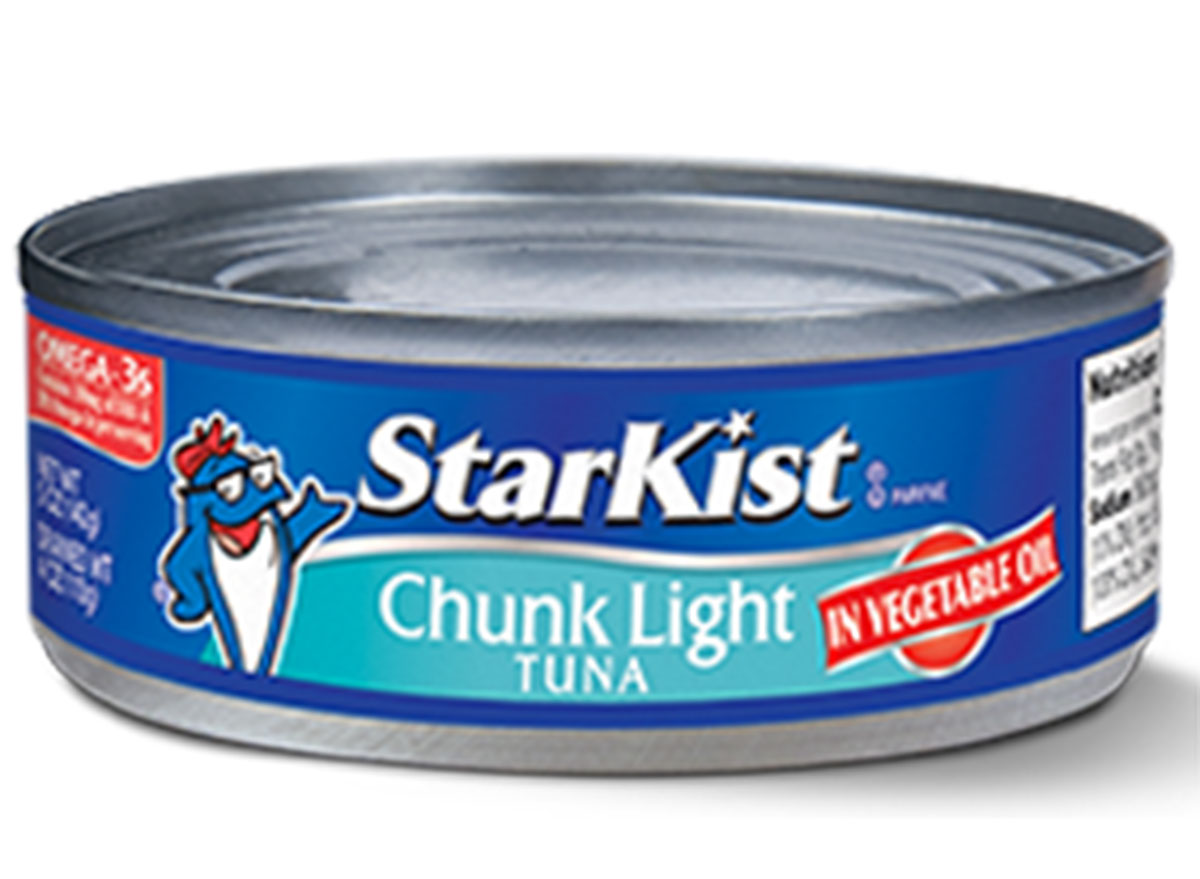
Starkist tuna faces criticism for its sustainability practices for several reasons. The primary concern is the brand's fishing method. Starkist has been associated with using methods such as purse seining (or netting) and longline fishing—which involves setting long lines with numerous hooks that can result in high levels of bycatch and is a method that can lead to the unintended fishing of endangered marine life.
Moreover, the transparency and traceability of Starkist's supply chain are called into question. They lack comprehensive information about their sourcing and they do not hold third-party certifications for sustainable fishing practices. Both of which contribute to concerns about the brand's genuine interest in sustainability efforts.

